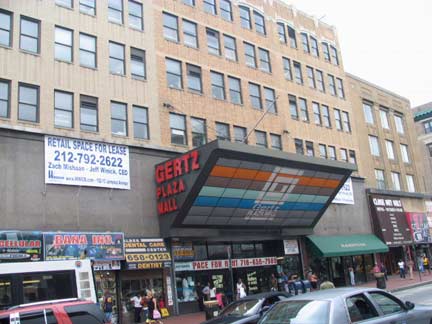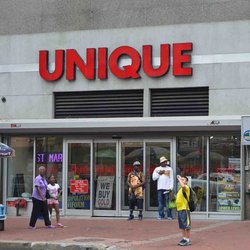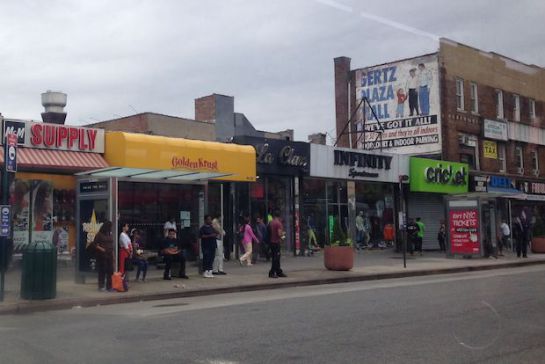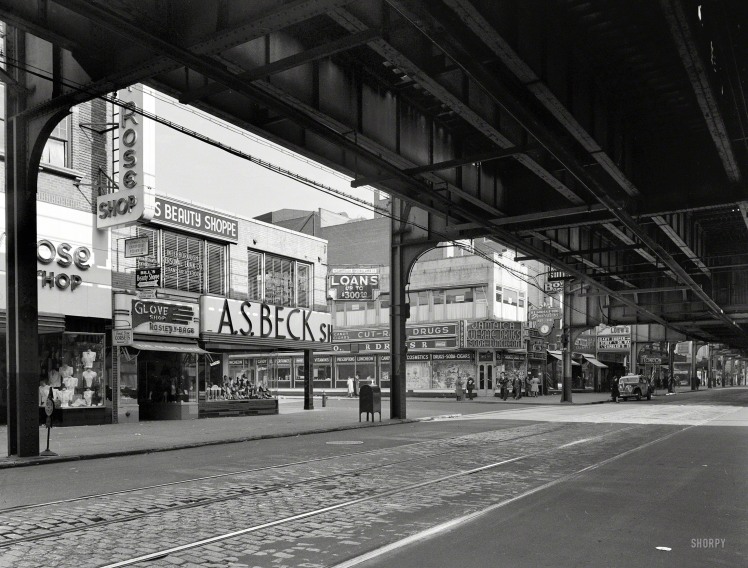Jamaica was named after the Jameco or Yamecah Native Americans that first inhabited the land. The Jameco, the tribe’s word for beaver, were a small tribe that lived around Beaver Pond and Stream. Beaver Pond and Stream, which is said to have been adjacent to King Manor, used to lead into Baisley Pond, but it has long since been buried. The oldest parts of King Manor were constructed in the mid 1700s, but in 1805 it was purchased along with 90 acres of land by Rufus King for $12,000. After the death of his granddaughter Cornelia King in 1896, the manor and the remaining eleven acres were bought by Jamaica for $50,000 and two years later, Jamaica was absorbed by the City of New York. In 1900, King Manor became a museum.

The first batch of settlers were the Dutch who named the town Rustdorp. The town consisted of the entire south east portion of Queens stretching down to Jamaica Bay, including Jamaica Avenue which was an old Indian trail that was said to have been used for trade with people as far away as the Ohio River and Great Lakes. In 1655 (some sources say 1656), fifteen English families were granted a charter from Governor Stuyvesant to settle in the town and they called it Rusdorf. In 1662, the First Presbyterian Church was established and it remains the oldest continuously serving Presbyterian Church in America.


In 1664, the English took control of the New Amsterdam colony, renamed it New York, and renamed the town Jamaica. When Queens, named in honor of Queen Catherine of Braganza, was made a county in 1683, it consisted of five towns: Newtown, Flushing, Hempstead, Oyster Bay, and Jamaica. Jamaica was the county seat and colonial capital of Queens. There was a court/church constructed in Jamaica for about $300 and lynchings/executions were said to have been carried out around Beaver Pond.
In 1743, Grace Church was opened after the courthouse became too small to house the church’s growing congregation. Rufus King was a major benefactor to the church. During the Revolutionary War, the church became the British colonial government’s official church. In 1862, it was renovated to how it is seen today.

By 1834, the Brooklyn and Jamaica Railroad Company had a line in Jamaica and by 1850, Kings Highway had become Fulton Street. In 1866, Fulton Street was fitted with tracks for a horse car line.
In the years following the Civil War (1851-1856), the population of Jamaica dramatically increased. In 1875, the population was 780 and by 1910, it was over 58,000. In 1913, the Jamaica Long Island Railroad Station was completed, this allowed for people to live in Jamaica and commute to work in Manhattan. During the Roaring 20s and the years following, Jamaica became a hotspot and the financial heart of Queens. During that time, department stores like Gertz and Macy’s were established. Gertz Mall started leasing its spaces to other retail stores like Conway in the late 2000s. Today, all that remains is a smaller store known as Unique whose food court and lower level are the same as when Gertz Mall occupied the building. Although the mall no longer exists, there is still an old fashioned ad for it painted on the side of a building at the intersection of Jamaica and Sutphin Blvd and vacant parking garage.
Gertz Plaza Mall




The Macy’s in Jamaica closed in the late 1970s and in 1984, the building became the Jamaica Colosseum Mall. Currently the mall is for sale at a list price of $45 million.


In 1929, Loew’s Valencia Theatre was established, today the Tabernacle of Prayer Church occupies and preserves the building.


Inside Loew’s Valencia Theatre today.
In 1930, America’s first modern supermarket, King Kullen, was put up in Jamaica (the franchise still exists, but there isn’t a location in Jamaica today).

Jamaica was thriving until the demolition of the Jamaica Avenue El or elevated line from 121st to 169th St. in 1972. The line was demolished because it was considered unsightly and construction on the Archer Avenue subway began. With the demolition of the line, came a huge economic loss. Jamaica was no longer a transit hub and the businesses in the area suffered losses. It was this demolition that led to the closure of the Macy’s in the area.

The new subway for the E, J and Z lines opened in 1988 and business returned to the area.
Since its establishment, the town of Jamaica has split into multiple neighborhoods that is commonly referred to as Greater Jamaica. The towns that came out of this split are Richmond Hill, Woodhaven, St. Albans, Rochdale, Springfield Gardens, Hollis, Laurelton, Cambria Heights, Howard Beach, Ozone Park, Queens Village, and Jamaica.
Over the years, what was once a town where the overwhelming majority of the population was white, slowly became more diverse. As you can see on the Changing Demographics page, the population of Queens slowly became diversified, and by 1980, there were clearly defined boundaries. The majority of the population of Jamaica, South Jamaica, South Ozone Park, St. Albans and Hollis (all towns that were once a part of Jamaica) is now black. The boundaries of the area with a highly concentrated black population were the Cross Island Pkwy, the Van Wyck Expressway and Hillside Avenue. The boundaries still exist, but they aren’t as defined as they were in 1980.
Today, Jamaica Center has become a major transit hub with over 20 bus lines operating in the neighborhood, more than half of which terminate or originate in the city. There are also 3 subway lines that originate and terminate in Jamaica and of eleven LIRR branches, ten run through the neighborhood. In addition, JFK airport’s air train also originates here at Sutphin Blvd.
SOURCES
- http://www.thirteen.org/queens/history.html
- http://www.innerexplorations.com/home/black.htm
- http://thehistorybox.com/ny_city/nycity_history_jamaica_queens_article00715.htm
- http://dunhamwilcox.net/ny/jamaica_li_hist.htm
- http://www.richmondhillhistory.org/JamaicaAve.html
- https://archive.org/details/recordsoftownofj03jamaihttp://forgotten-ny.com/2007/11/takin-jamaica-avenue/
- http://www.go2ccj.org/visit-jamaica/jamaicas-rich-history
- https://jamaicahospital.org/index.php/general-info/history-of-jamaica/
- http://gjdc.org/about-us/jamaica-history/
- http://www.hofstra.edu/academics/colleges/hclas/anthro/hpia/hpia-atkinson.html
- http://www.shorpy.com/node/14632
- http://www.qgazette.com/news/2010-03-10/Features/Jamaica_Estates_Details_History_Of_Gated_Community.html
- https://dmna.ny.gov/historic/armories/Jamaica168thStreet.html
- http://www.nycsubway.org/wiki/Historical_Maps
- https://cleanupjamaicaqueens.wordpress.com/2015/02/04/black-history-month-saturday-february-7th-7pm-open-mike-in-the-round-at-jamaica-performing-arts-center-in-downtown-jamaica-3/
- http://www.brooklynrail.org/2007/9/art/macys
- http://www.thirteen.org/queens/history.html
- http://www.nytimes.com/1997/09/21/realestate/if-you-re-thinking-living-jamaica-estates-queens-enclave-that-treasures-its.html?pagewanted=all
- http://forgotten-ny.com/2011/05/ponds-of-eastern-queens-part-2/
- https://archive.org/details/inscriptionsfrom00frost
- http://www.nycgovparks.org/parks/rufus-king-park/history
- http://www.nycgovparks.org/events/2016/04/17/meet-the-author-sergey-kadinsky
- http://www.firstchurchjamaica.org/?page_id=129
- http://www.nycago.org/organs/qns/html/graceepisjamaica.html
- http://www.kingkullen.com/about-us/
- http://cinematreasures.org/theaters/903
- https://www.dnainfo.com/new-york/20150129/jamaica/jamaica-colosseum-mall-listed-for-sale-for-45-million-report
- http://thejamaicacolosseummall.com/history/
- http://www.nycsubway.org/wiki/The_New_York_Transit_Authority_in_the_1970s
- http://web.mta.info/lirr/about/GeneralInformation/
- http://data.schoolbook.org
*The sources for the pictures are linked to the pictures.
